The rich gold threads, the draw of silk's soft touch, and the history that brought remarkable Caucasian and Ottoman embroideries to an eastern Mediterranean hill are a must-see for visitors to Lebanon.
Nestled in the Lebanese village of Bsous, the Silk Museum traces the history of the trade and its production and currently features 97 exquisite embroidered pieces of different styles.
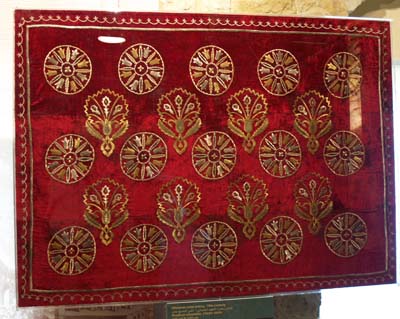
Rich Ottoman embroidery at Silk Museum (Abu-Fadil)
The intricately designed items belong to Serge Nalbandian, whose family has collected, bought and sold fine antiques, carpets and textiles since 1792.
The covers, prayer rugs, brides' trousseaus, priests' garments, bed canopies, and curtains on the second floor of the one-time silk mill are a feast for the eyes.
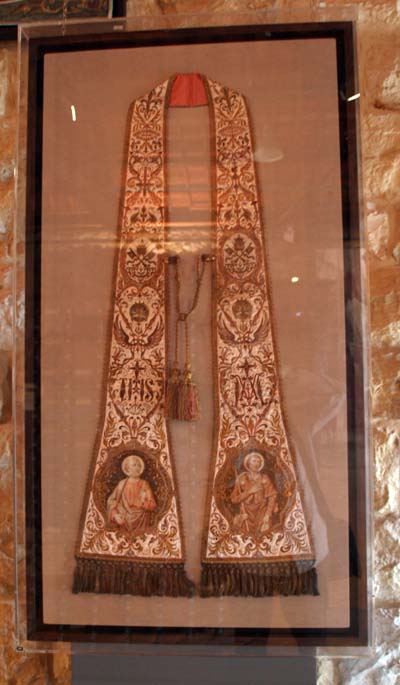
Part of priest's garment (Abu-Fadil)
While tales of silk weavers and dynastic attire conjure images of China, Westerners may not realize Lebanon was once a center of silk production.
Poets, adventurers and merchants traversed the famed "Silk Road" that wound its way from the farthest corners of Asia to the West, bringing this soft and beautiful product to eager buyers.
Interestingly, the mountains above Beirut were also once home to a thriving silk industry.
In 2001, George and Alexandra Asseily turned a property they acquired into a delightful museum tracing silk's history and exhibiting splendid examples from around the world.

Old silk mill-cum-museum in Bsous, Lebanon (Abu-Fadil)
"In 1973 we bought the property from the Fayad family, who had owned and run the silk spinning factory for about 50 years until 1945 and who had lived in the big house at the top of the land," the couple wrote of their attraction to the place.
They had discovered a large abandoned house, silk factory, various ruined cottages and surrounding terraces in 1966 while driving through the region.
Driving to Bsous 15 kilometers (9.3 miles) east of the capital, one can easily miss signs to the narrow downward winding road from the village's main street. The entrance is unimposing and the parking lot accommodates few cars.
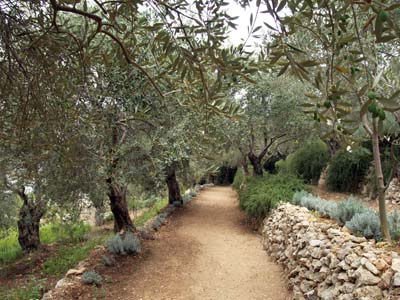
Silk museum olive grove (Abu-Fadil)
The terraced flower and herb gardens leading up a path through an olive grove to the museum seem a throwback to Lebanon's laid back lifestyle with its traditional cut stone houses and red tile roofs.
The restored "kerkhana" (spinning mill) boasts a lower exhibition hall of beautifully understated cut stone and dim lighting to showcase its exhibits.
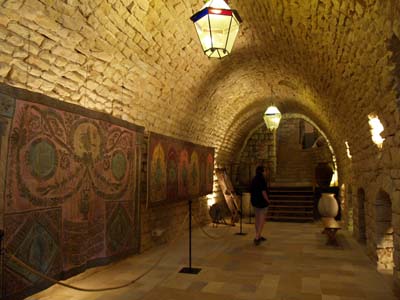
Exhibition hall (Abu-Fadil)
Prior to its transformation into a haven for art and history lovers, the mill provided jobs for countless young women -revolutionary in a traditional rural environment -- during Lebanon's sericulture Golden Age (1840-1912).
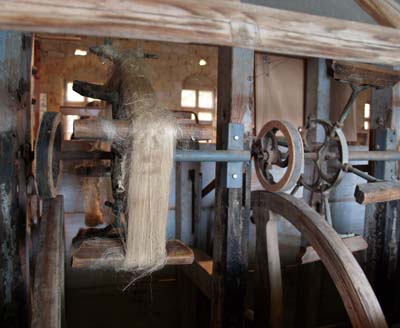
Cocoon threads spun into silk (Abu-Fadil)
This historical brief from the museum sheds light on Lebanon's ties to silk:
Under the reign of Cyrus (556-530 BC) in the 4th century BC, the vast Persian Empire opened caravan routes of Chinese silk - woven or raw - into Phoenicia. Therefore, the silk tradition in Lebanon is more than two thousand years old and goes back to the period of the famous purple dye (ourjouan) extracted from the Murex shell by the Phoenicians of Sidon and Tyre and which was used to produce imperial purple silk.
The Byzantine Emperor Justinian the Great (537-564 AD) also realized the importance of producing silk and ordered two Nestorian priests to go east to uncover the secret behind silk making. Two years later, the priests returned from Central Asia, with a good quantity of silkworm eggs, which they had carefully hidden in their bamboo canes. From then on, sericulture (silkworm breeding) developed in the Byzantine Empire, especially in Syria and Lebanon, where mulberry trees (the golden tree) were grown and the silk worm was farmed.
Fakhreddine II Ma'an (1572-1635), "The Agronomist Prince", developed silk related agriculture and established an industry based on the production of silk. This would ensure economic autonomy to the emirate of Mount-Lebanon, thanks to its commercial exchanges with Tuscany and Modena. The silk bundles were grouped in the "Kaysarieh" of Deir el Kamar as well as the "khans" of Sidon, Tripoli and Beirut, where local weavers would get their silk supply. This particular kind of silk was called "baladi" (literally, from the region), and was famed for its beautiful yellow color. In the 19th century, Lebanon's reputation for sericulture grew thanks to the know-how developed in partnership with the silk weavers of Lyon, on the other side of the Mediterranean.
.....
In those days, the silk season was a great agro-industrial event for thousands of Lebanese. It constituted 50% of the GDP of Mount Lebanon. In fact so many families farmed the silk worm at that period, that it became a tradition called "the season of glory."
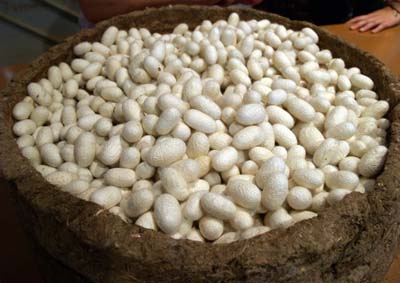
Cocoons ready for processing (Abu-Fadil)
The museum is open from May 1 to October 31, Tuesday to Sunday from 10:00 a.m. to 6:00 p.m., or by appointment. Admission is L.L. 5,000 ($3.30) for adults and L.L. 3,000 ($1.90) for students.